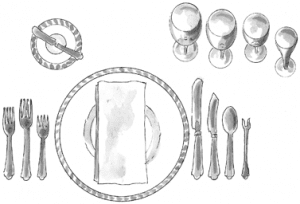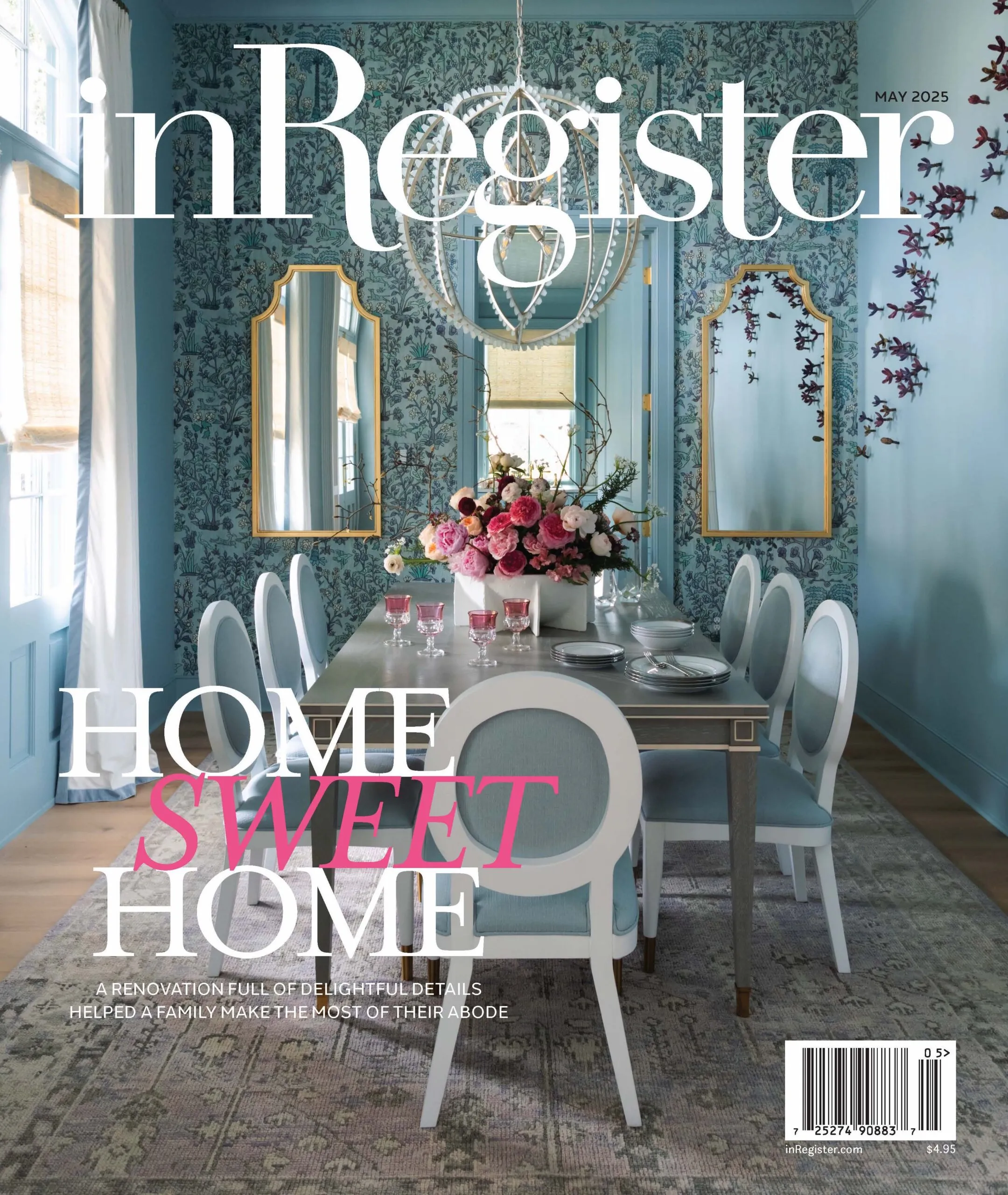Social graces: Etiquette experts share secrets to entertaining with ease
Once upon a time, according to the 19th-century manners manual The Habits of Good Society: A Handbook of Etiquette for Ladies and Gentlemen, the length of one’s conversation depended most upon the location that conversation took place. One must never smoke in daylight. Gloves must always be white, never yellow. And finally, a woman must NEVER have more than one glass of Champagne.
Thankfully, our society has since rested its tensely poised shoulders a bit. Our social interactions range from backyard barbecues to ladies’ nights out to evenings spent lounging together on the couch in pajamas with a glass of wine.
However, according to Stacey Rodriguez of Paper n Things and Allison Ray of Ruffles ‘n Britches, the practice of etiquette is far from a lost art. In today’s world of glorified convenience, engaging in the age-old tradition of entertaining etiquette offers a refreshing contrast. “It brings people to take time and care in their interactions with one another,” says Rodriguez.
The two women are hosts of the children’s “Impeccable Manners Etiquette” class held regularly at The Royal Standard. In contrast to The Habits of Good Society, Rodriguez presents me with an old edition of Emily Post’s The Etiquette Book. “My mother gave me this in 1978,” she says. “It’s become like my journal.”
The Emily Post Institute has produced such books since 1922, regularly updating them to address contemporary concerns. Today, on the Institute’s website, along with articles on table manners are useful guides on things like email etiquette.
While Rodriguez agrees that the rules must grow with the age, and by no means seeks to return to Victorian-era rigidity, she and Ray both refer to themselves as old-school. “I feel like the older rules better represent the Southern way,” says Rodriguez.
In recognition of National Etiquette Week this week, we had the women share with inRegister the dos and do-nots of home entertaining.
Before the Party
“First thing: Decide on your invitations,” says Ray. “Your invitations are a tool used to set the tone of what you want to do, whether it be a casual dinner or a formal one.”
Hosts, she says, should indicate what guests should expect and how they should dress through the invitation design or by instruction. Guests, likewise, should be receptive to the level of formality suggested by the invitations. “Dressing the part allows you to feel like you are participating,” says Ray. “You are a part of something.”
The invitation should also clearly communicate the date, location and time, as well as how to RSVP. Guests should always let hosts know if they plan to attend as soon as possible in consideration of the host and his/her planning.
Decor and Table Setting
Perhaps one of the most recognized subjects in the field of etiquette is the place setting. For a formal three-course meal, Rodriguez refers to the directions of Ms. Post as seen in the diagram below:

Even should you decide not to pull out the individual salt and pepper shakers or the seafood fork, Rodriguez encourages hosts to actually use the china stored away in their cabinets. “Let’s get back to using real plates and utensils, real napkins, real linen tablecloths,” she says. “It’s more work, but it makes a real and lasting impression.”
In other parts of the house, the women suggest special touches like decorative towels in the bathrooms, scented candles and fresh flowers.
“The biggest thing, though,” emphasizes Ray,”is having a designated seating area prepared. People these days expect their guests to stand and eat. Don’t. Give them a place to sit down and talk to each other.”
She even suggests using place cards at the table: “A lot of people have gotten away from that. But it gives the host a chance to mix up his or her guests, put them with people they aren’t so familiar with. The whole idea of a dinner party is to meet people!”
During the Party
By the time guests arrive, the host should have already have the meal prepped, the table set, with refreshments at the ready. The host should greet each guest individually at arrival.
“Guests should bring a little gift,” says Ray. “Whether it be a contributory bottle of wine or a bouquet of flowers.”
Rodriguez points out the tendency these days of guests to gather in the kitchen before the meal. “You should really go into the living room or the den to sit down and visit,” she says. “That way, the host can come out of the kitchen.”
During dinner, try to remember the basic rules your parents taught you: Keep your elbows off the table, ask your neighbor to pass the gravy, don’t talk with your mouth full.
“And for goodness sakes, leave your cell phone in the car, or in your pocket on silent,” says Ray. “Don’t pull it out and don’t put it on the table.”
Finally, “don’t overstay your welcome,” says Rodriguez. “If you see the hostess looking at their watch, or that the table is completely cleaned off, its probably time to go.”
After the Party
“If someone invites you to their home, always, always, always write a thank you note,” says Rodriguez. “The next day. Write it and put it in the mail.”
There is one rule in The Habits of Good Society: A Handbook of Etiquette for Ladies and Gentlemen that has endured, even today: “Anything that detracts from the pleasure of society is in bad taste.” In other words, the most important thing to remember is to enjoy yourself and the company of others.












